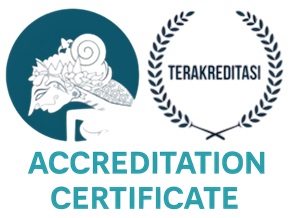Application of the Certainty Factor Method in Diagnosing Expert Systems of Oyster Fungus Pests and Diseases
Abstract
The Department of Agriculture and Food Security of Bengkulu Province is one of the government agencies that annually conducts outreach to farmer cultivators to increase crop yields. Therefore, in this study an expert system application was developed that can be used by cultivators to find out pests and diseases that attack plants based on the symptoms they experience. The expert system for diagnosing oyster mushroom pests and diseases at the Agriculture and Food Security Service of Bengkulu Province can be used as a tool to help diagnose oyster mushroom pests and diseases by entering the symptoms experienced by the oyster mushroom. This expert system for diagnosing pests and diseases of oyster mushrooms was created using the Visual Basic .Net programming language (IDE Visual Studio 2010). The expert system for diagnosing pests and diseases of oyster mushrooms has been applied to the Certainty Factor Method which is used to obtain a percentage level of certainty for pests and diseases of oyster mushrooms based on the symptoms experienced by oyster mushrooms. Based on the results of the tests that have been carried out, the functional application of the expert system for diagnosing oyster mushroom pests and diseases is running as expected and can provide information on the results of consultations in the form of a diagnosis of oyster mushroom pests and diseases
Downloads
Copyright (c) 2023 Ronaldi Ronaldi, Asnawati Asnawati, Prahasti Prahasti

This work is licensed under a Creative Commons Attribution-ShareAlike 4.0 International License.






.png)

